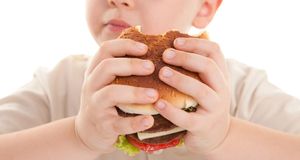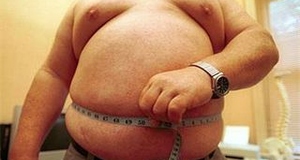Weight Bias and Anti-Fat Attitudes: Sources, Impacts, and Prevention Methods
By
2014, Vol. 6 No. 10 | pg. 3/3 | « Conclusion and RecommendationsWeight bias is a prevalent type of prejudice that targets individuals who are overweight or obese. The act of engaging in such bias can stem from an individual’s antifat attitudes. Acting upon such biases can be hurtful, in both psychological and physical regards, for targeted individuals. The studied sources of weight bias include within health care settings, college admissions processes, and workplace settings (Schwartz, Chambliss, Brownell, Blair, & Billington, 2003; Canning and Mayer, 1966; Pingitore, Dugoni, Tindale, & Spring, 1994). The explanation for weight bias in these sources is that the individuals who populate these settings often act upon weight-based stereotypes. Such stereotypes include beliefs that obesity is related to characteristics such as laziness, worthlessness, and stupidity (Schwartz, Chambliss, Brownell, Blair, & Billington, 2003). These assignments of such characteristics to overweight and obese individuals can sometimes overtly or subtly alter a professional’s behavior by allowing the professional to believe that the characteristic assignment is true (Schwartz, Chambliss, Bronwell, Blair, & Billington, 2003; Burmeister, Kiefner, Carels, & Musher-Eizenman, 2012; Rothblum, Brand, Miller, & Oetjen, 1990). There have been documented consequences of weight bias for afflicted overweight and obese individuals. These consequences can be both psychological and physical in nature. The psychological effects of weight bias can include depression and body dissatisfaction (Puhl & Heuer, 2009). Depression and body dissatisfaction can occur due to the fact that these individuals must be subjected to the stigmatization and resulting actions of weight bias sources. The physical effects of weight bias can include changes in eating behavior and physical activity (Puhl & Heuer, 2009). Changes in these behaviors can also result from being subjected to stigmatization and the behaviors of the weight bias sources. The resulting effects of weight bias, both physical and psychological, can be detrimental to the affected individual because of the problems that could stem from these effects, such as binge eating behaviors or ceasing physical activity.It is important to be aware of weight bias reduction methods in order to create an environment in which all types of body sizes are accepted. These methods can include educational tactics and publicized interventions. The purpose of educational tactics is to enlighten individuals from common weight biased sources about different aspects of obesity. The idea behind this reduction method is that when people know more about a particular issue they can make more informed decisions and choices afterwards. This idea suggests that once individuals know more about obesity, they will be less likely to engage in weight biases (intentionally or otherwise). The purpose of using publicized interventions is to promote the images of individuals of varying body sizes in magazine advertisements and television shows. This type of reduction method works to make individuals with body sizes classified as overweight or obese feel more widely accepted by the broader society, which can help create more accepting environments (Puhl, Moss-Racusin, Schwartz, and Brownell, 2008). ReferencesAcademy of Nutrition and Dietetics. (2013). Defining overweight and obese. It’s About Eating Right. Retrieved from April 24, 2013 from http://www.eatright.org/Public/content.aspx?id=6845 Annis, N. M., Cash, T. F., & Hrabosky, J. I. (2004). Body image and psychosocial differences among stable average weight, currently overweight, and formerly overweight women: The role of stigmatizing experience. Body Image, 1, 155-167. Brownell, K. D. (1991). Dieting and the search for the perfect body: Where physiology and culture collide. Behavior Therapy, 22, 1-12. Burmeister, J. M., Kiefner, A. E., Carels, R. A., & Musher-Eizenman, D. R. (2012). Weight bias in graduate school admissions. Obesity, doi: 10.1002/oby.20171 Canning, H., & Mayer, J. (1966). Obesity: Its possible effect on college acceptance. New England Journal of Medicine, 275, 1172-1174. Carels, R. A., Burmeister, J., Oehlhof, M. W., Hinman, N., LeRoy, M., Bannon, E., Koball, A., & Ashrafloun, L. (2013). Internalized weight bias: Ratings of the self, normal weight, and obese individuals and psychological maladjustment. Journal of Behavioral Medicine, 36(1), 86-94. doi: 10.1007/s10865-012-9402-8 Center for Disease Control and Prevention. (2012). Adult obesity facts. Overweight and Obesity. Retrieved from April 24, 2013 from http://www.cdc.gov/obesity/data/adult.html Chambliss, H. O., Finley, C. E., & Blair, S. N. (2004). Attitudes toward obese individuals among exercise science students. Medicine and Science in Sport and Exercise, 36(3), 468-474. doi: 10.1249/01.MSS.0000117115.94062.E4 Crandall, C. S. (1994). Prejudice against fat people: Ideology and self-interest. Journal of Personality and Social Psychology, 66(5), 882-894. Diedrichs, P. C., & Barlow, F. K. (2011). How to lose weight bias fast! Evaluating a brief anti-weight bias intervention. British Journal of Health Psychology, 16, 846-861. doi: 10.1111/j.2044-8287.2011.02022.x Food Research and Action Center. (2010). Adult overweight and obesity in the U.S. Overweight and obesity in the U.S. Retrieved from April 24, 2013 from http://frac.org/initiatives/hunger-and-obesity/obesity-in-the-us/ Friedman, K. E., Reichmann, S. K., Costanzo, P. R., Zelli, A., Ashmore, J. A., & Musante, G. J. (2005). Weight stigmatization and ideological beliefs: Relation to psychological functioning in obese adults. Obesity Research, 13(5), 907-916. doi: 10.1038/oby.2005.105 Greenwald, A. G., McGhee, D. G., & Schwartz, J. L. (1998). Measuring individual differences in implicit cognition: The implicit association test. Journal of Personality and Social Psychology, 74, 1464-1480. Grilo, C. M., & Masheb, R. M. (2005). Correlates of body image dissatisfaction in treatment-seeking men and women with binge eating disorder. International Journal of Eating Disorders, 38, 162-166. Jackson, T. D., Grilo, C. M., & Masheb, R. M. (2002). Teasing history and eating disorder features: An age- and body mass index- matched comparison of bulimia nervosa and binge-eating disorder. Comprehensive Psychiatry, 43, 108-113. O’Brien, K. S., Latner, J. D., Halderberstadt, J., Hunter, J. A., Anderson, J., & Caputi, P. (2008). Do antifat attitudes predict antifat behaviors? Obesity, 16(2), 87-92. Pingatore, R., Dugoni, B. L., Tindale, R. S., & Spring, B. (1994). Bias against overweight job applicants in a simulated employment interview. Journal of Applied Psychology, 79(6), 909-917. Puhl, R. M., & Heuer, C. A. (2009). The stigma of obesity: A review and update. Obesity, doi: 10.1038/oby.2008.636 Puhl, R. M., Moss-Racusin, C. A., & Schwartz, M. B. (2007). Internalization of weight bias: Implications for binge eating and emotional well-being. Obesity, 15(1), 19-23. Puhl, R. M., Moss-Racusin, C. A., Schwartz, M. B., & Brownell, K. D. (2008). Weight stigmatization and bias reduction: Perspectives of overweight and obese adults. Health Education Research, 23(2), 347-358. doi: 10.1093/her/cym052 Rothblum, E. D., Brand, P. A., Miller, C. T., & Oetjen, H. A. (1990). The relationship between obesity, employment discrimination, and employment-related victimization. Journal of Vocational Behavior, 37, 251-266. Rudolph, C. W., Wells, C. L., Weller, M. D., & Baltes, B. B. (2008). A meta-analysis of empirical studies of weight-based bias in the workplace. Journal of Vocational Behavior, 74(1), 1-10. doi: 10.1016/j.jvb.2008.09.008 Schwartz, M. B., Chambliss, H. O., Brownell, K. D., Blair, S. N., & Billington, C. (2003). Weight bias among health professionals specializing in obesity. Obesity Research, 11(9), 1033-1039. Storch, E. A., Milsom, V. A., DeBraganza, N. (2007). Peer victimization, psychosocial adjustment, and physical activity in overweight and at-risk-for-overweight youth. Journal of Pediatric Psychology, 32, 80-89. Swami, V., & Monk, R. (2012). Weight bias against women in a university acceptance scenario. The Journal of General Psychology, 140(1), 45-56. doi: 10.1080/00221309.2012.726288 Teachman, B. A., & Brownell, K. D. (2001). Implicit anti-fat bias among health professionals: Is anyone immune? International Journal of Obesity, 25(10), 1525-1531. Wang, Y., & Lobstein, T. (2006). Worldwide trends in childhood overweight and obesity. International Journal of Pediatric Obesity, 1, 11-25. Suggested Reading from Inquiries Journal
Inquiries Journal provides undergraduate and graduate students around the world a platform for the wide dissemination of academic work over a range of core disciplines. Representing the work of students from hundreds of institutions around the globe, Inquiries Journal's large database of academic articles is completely free. Learn more | Blog | Submit Latest in Psychology |


















